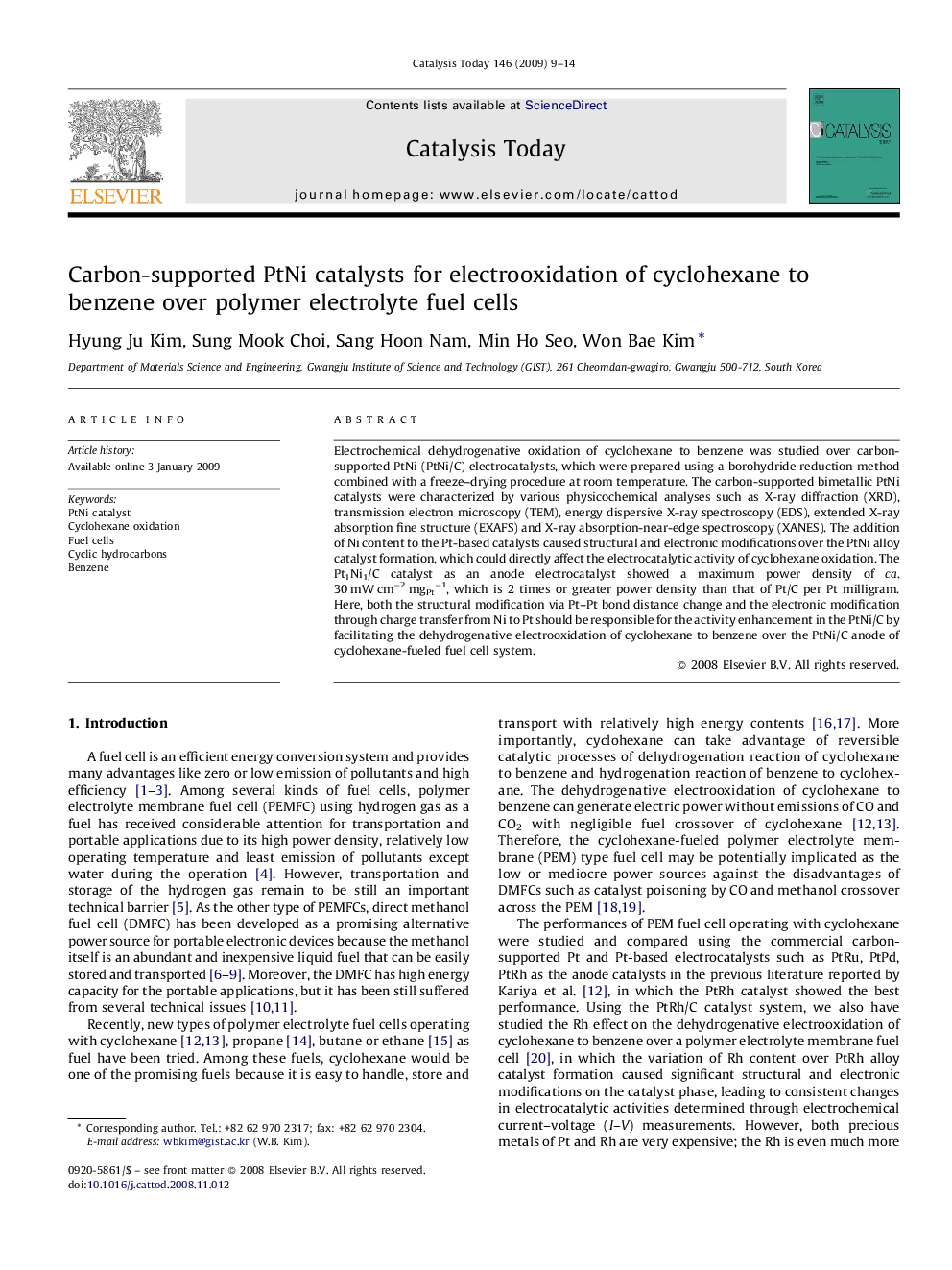| Article ID | Journal | Published Year | Pages | File Type |
|---|---|---|---|---|
| 57200 | Catalysis Today | 2009 | 6 Pages |
Electrochemical dehydrogenative oxidation of cyclohexane to benzene was studied over carbon-supported PtNi (PtNi/C) electrocatalysts, which were prepared using a borohydride reduction method combined with a freeze–drying procedure at room temperature. The carbon-supported bimetallic PtNi catalysts were characterized by various physicochemical analyses such as X-ray diffraction (XRD), transmission electron microscopy (TEM), energy dispersive X-ray spectroscopy (EDS), extended X-ray absorption fine structure (EXAFS) and X-ray absorption-near-edge spectroscopy (XANES). The addition of Ni content to the Pt-based catalysts caused structural and electronic modifications over the PtNi alloy catalyst formation, which could directly affect the electrocatalytic activity of cyclohexane oxidation. The Pt1Ni1/C catalyst as an anode electrocatalyst showed a maximum power density of ca. 30 mW cm−2 mgPt−1, which is 2 times or greater power density than that of Pt/C per Pt milligram. Here, both the structural modification via Pt–Pt bond distance change and the electronic modification through charge transfer from Ni to Pt should be responsible for the activity enhancement in the PtNi/C by facilitating the dehydrogenative electrooxidation of cyclohexane to benzene over the PtNi/C anode of cyclohexane-fueled fuel cell system.
